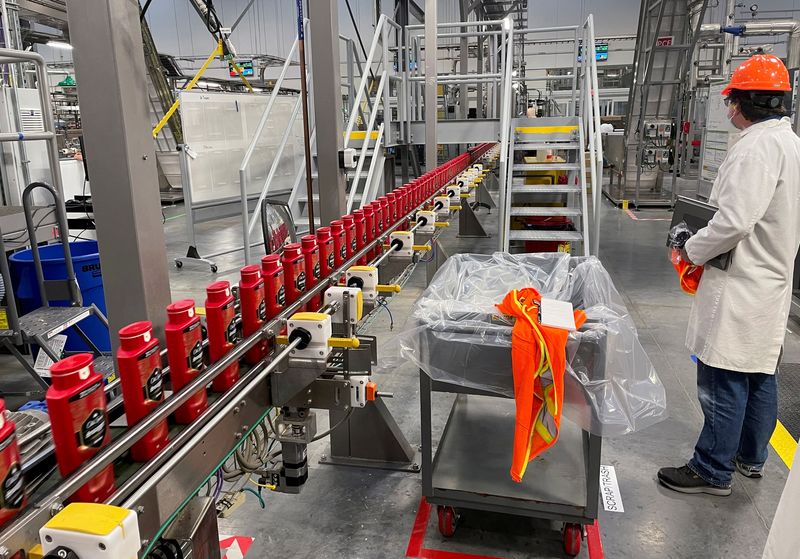By Timothy Aeppel
(Reuters) - North American companies ordered about a third fewer robots last year as worries about a slowing economy and higher interest rates made it harder to justify buying the advanced machines, the first hiccup in five years in what has been a steady progression of the robot invasion of the region's workforce.
"When the economy isn’t great, it’s easier to delay purchases," said Jeff Burnstein, president of the Association for Advancing Automation, an industry group that tracks robot orders.
Companies bought 31,159 robots in 2023, a decrease of 30% over the year before, the largest drop in percentage terms since 2006 and largest drop ever in net units, according to the group, known as A3. The pullback occurred in automotive-related industries - which made up about half of the market last year - as well as other sectors such as food and metals manufacturing.
Orders in the fourth quarter hit 7,683, an 8% drop from the same period a year earlier.
Slowing robot orders came even as some companies announced initiatives to develop more advanced versions of the machines. Robotics startup Figure said last month it forged a partnership with Germany’s BMW (ETR:BMWG) to deploy humanoid robots in the carmaker’s South Carolina factory to take on certain physical tasks. Electric-vehicle maker Tesla (NASDAQ:TSLA) also has a humanoid robot in development.
But for many robot makers, selling existing machines has been hampered by worries about a softening economy and the excess inventories built up during the COVID-19 pandemic. Universal Robots, a Danish maker of small, flexible robots, recently reported its revenue fell 7% last year, to $304 million.
Universal’s president, Kim Povlsen, told investors: "2023 was characterized by a difficult economic and business environment for many of our core customers with global industrial activity slowing in the first half of the year."
COMING OFF A RECORD YEAR
Robot sales boomed during the COVID-19 pandemic - as producers scrambled to use the machines to churn out goods amid a dire labor shortage. Indeed, 2022 marked a record year for orders, according to A3’s data.
To be sure, robots are just one type of equipment companies need, and other gauges of spending have held up better in the U.S. Orders for non-defense capital goods excluding aircraft - a measure closely watched by economists to track trends in business spending - rose 1.7% last year, according to the Commerce Department, suggesting that investments in more basic types of equipment remained close to steady as the economy defied expectations of a sharper slowdown.
Dave Fox, president of CIM Systems Inc, a Noblesville, Indiana, company known as an integrator that assembles robotic systems for customers, said his business started off strong last year but then slumped.
"Several big projects got pushed into this year," said Fox. "There were definitely a few customers who brought up their concern about where the economy is headed. And interest rates probably didn’t help." Fox estimates his business volume fell 30% in 2023, compared with the year before.
Fox said some customers who delayed orders are now asking for updated quotes, which is a good sign for business in the months ahead. But he said it is too early to say whether business will return to lofty pandemic levels.
A3’s Burnstein said most robot producers he speaks with are optimistic that business will pick up during the second half of this year.
Burnstein said the industry has largely worked its way through the distortions caused by the pandemic.
During the crisis, many companies put in extra orders for robots because they worried about receiving deliveries amid production delays and a breakdown in global supply chains. "There’s still this feeling that companies were buying in advance of their needs (in 2022)," said Burnstein, "so a lot of companies now have inventory to work through before they order a lot of new robots again."
Joe Gemma, chief revenue officer of Wauseon Machine, a systems integrator in Ohio, agreed there was an inventory glut that distorted the business.

"A lot of us were ordering extra inventory," he said. "Our customers were too."
Gemma said an ongoing shortage of labor in the U.S. means the robot business will continue to thrive. "I was at a plant recently that normally has 600 people working in production - and they have 140 open positions," he said. "Almost every place we go, there’s still a workforce challenge."